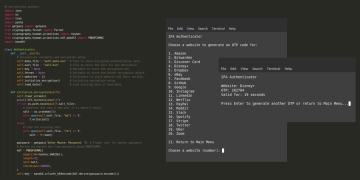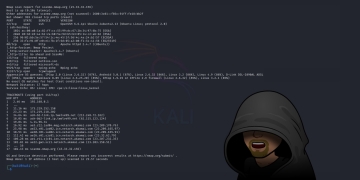Easter is one of the oldest and most significant festivals in the Christian calendar, celebrating the resurrection of Jesus Christ. However, unlike fixed-date holidays such as Christmas, Easter moves around each year. The reason for this variability lies in the method used to calculate the date of Easter, known as the Computus algorithm. In this article, we’ll look at the Computus algorithm, understand its intricacies, and implement it using JavaScript to determine the date of Easter dynamically.
Understanding the Computus Algorithm
The Computus algorithm calculates the date of Easter Sunday based on a combination of lunar and solar cycles. It was devised to ensure that Easter falls on a Sunday between March 22 and April 25, aligning with the timing of the spring equinox and the phases of the moon.
The algorithm revolves around determining the Paschal Full Moon, which is the first full moon after the spring equinox. Easter Sunday is then set as the Sunday following the Paschal Full Moon.
The key components of the Computus algorithm include:
- Golden Number: Represented by a number from 1 to 19, the Golden Number corresponds to the year’s position in the 19-year Metonic cycle, during which the phases of the moon repeat.
- Epact: Epact represents the age of the moon on January 1st of the year. It’s crucial for calculating the date of the Paschal Full Moon.
- Solar Correction: Adjustments made to account for the discrepancy between the solar year and the lunar year.
- Dominical Letter: This letter represents the day of the week of January 1st. It is used in conjunction with the Golden Number to determine the date of Easter.
Implement Easter Date Calculation
To illustrate how the Computus algorithm works and to provide a practical example of its implementation, let’s create a simple web application using HTML, CSS, and JavaScript.
The HTML Structure
Our web application will include a simple form for users to input a year, and it will display the calculated Easter date for that year.
<!DOCTYPE html>
<html lang="en">
<head>
<meta charset="UTF-8">
<meta name="viewport" content="width=device-width, initial-scale=1.0">
<title>Find Easter Date</title>
<link rel="stylesheet" href="style.css">
</head>
<body>
<div class="container">
<h1>Easter Date Calculator</h1>
<input type="number" id="yearInput" placeholder="Enter Year" min="1583">
<button onclick="calculateEaster()">Calculate</button>
<p id="result"></p>
</div>
<script src="script.js"></script>
</body>
</html>
Styling with CSS
We’ll add basic styling to make the interface user-friendly.
/* style.css */
body, html {
height: 100%;
margin: 0;
font-family: Arial, sans-serif;
}
.container {
display: flex;
flex-direction: column;
align-items: center;
justify-content: center;
height: 100%;
}
input, button {
margin: 10px;
padding: 10px;
font-size: 16px;
}
p {
margin-top: 20px;
font-size: 20px;
}
The JavaScript Logic
Now, we implement the Computus algorithm in JavaScript. The function calculateEaster takes the year as input and outputs the date of Easter.
// script.js
function calculateEaster() {
const year = document.getElementById('yearInput').value;
const a = year % 19;
const b = Math.floor(year / 100);
const c = year % 100;
const d = Math.floor(b / 4);
const e = b % 4;
const f = Math.floor((b + 8) / 25);
const g = Math.floor((b - f + 1) / 3);
const h = (19 * a + b - d - g + 15) % 30;
const i = Math.floor(c / 4);
const k = c % 4;
const l = (32 + 2 * e + 2 * i - h - k) % 7;
const m = Math.floor((a + 11 * h + 22 * l) / 451);
const month = Math.floor((h + l - 7 * m + 114) / 31);
const day = ((h + l - 7 * m + 114) % 31) + 1;
document.getElementById('result').innerText = `Easter is on ${day}/${month}/${year}`;
}
Explanation of the JavaScript Code
In the calculateEaster function, we dive into an algorithm that stands as a bridge between astronomical observations and ecclesiastical rules. This algorithm’s foundation is laid upon a series of calculations that determine the date of Easter based on the year input by the user. Each step is important in navigating through the intricacies of the lunar calendar and the ecclesiastical approximation of astronomical events. Let’s explore each operation in detail:
Year Division and Golden Number
The process begins with obtaining the year from the user input. This year is subjected to a series of mathematical operations designed to align with lunar and solar cycles. The first step calculates the Golden Number (a = year % 19), which is fundamental in the Computus algorithm. The Golden Number represents a cycle of 19 years, after which the phases of the moon repeat on the same days of the year if corrections for the leap year are ignored. This cycle is key to predicting the moon’s behavior, including the timing of the Paschal Full Moon.
Century Calculations
The calculations that follow involve dissecting the year into century-related components (b, c, d, e). These components are used to adjust for the fact that the Gregorian calendar introduces discrepancies in the lunar cycle over long periods. By dividing the year by 100 (b = Math.floor(year / 100)), we obtain the century, which plays an important role in further adjustments, including the number of skipped leap years and corrections for the moon’s orbit.
Corrections for the Moon’s Orbit
The next phase involves complex calculations to account for corrections in the moon’s orbit (f, g). These corrections are necessary due to the elliptical shape of the moon’s orbit around the Earth, which causes variations in the moon’s apparent size and brightness. The algorithm applies a series of formulae to mitigate these variations and align the ecclesiastical full moon with the astronomical full moon.
Determining the Paschal Full Moon
The heart of the Computus algorithm lies in determining the date of the Paschal Full Moon (h, i, k, l, m). This part of the algorithm is a mathematical representation of the ecclesiastical rules set forth for calculating Easter. The Paschal Full Moon is defined as the ecclesiastical full moon that falls on or after the spring equinox (fixed at March 21). The algorithm uses the previously calculated values to approximate the date of this full moon, which is important for finding Easter Sunday.
Calculating Easter Sunday
Finally, the algorithm calculates Easter Sunday itself (month, day). By determining the month and day on which the Paschal Full Moon occurs, it then identifies the following Sunday. This is the date on which Easter will be celebrated. The calculation takes into account all the lunar and solar corrections to pinpoint the exact Sunday that follows the Paschal Full Moon, according to the rules of the Western Christian Church.
Example Output
Conclusion
The Computus algorithm is a fascinating computational method used to determine the date of Easter Sunday each year. By implementing this algorithm in web development using HTML, CSS, and JavaScript, we can create a simple yet powerful tool for calculating Easter dates dynamically. This example demonstrates how fundamental programming concepts can be applied to solve real-world problems and enhance user experience on the web. With a deeper understanding of the Computus algorithm and its implementation, developers can create even more sophisticated applications and utilities.
























